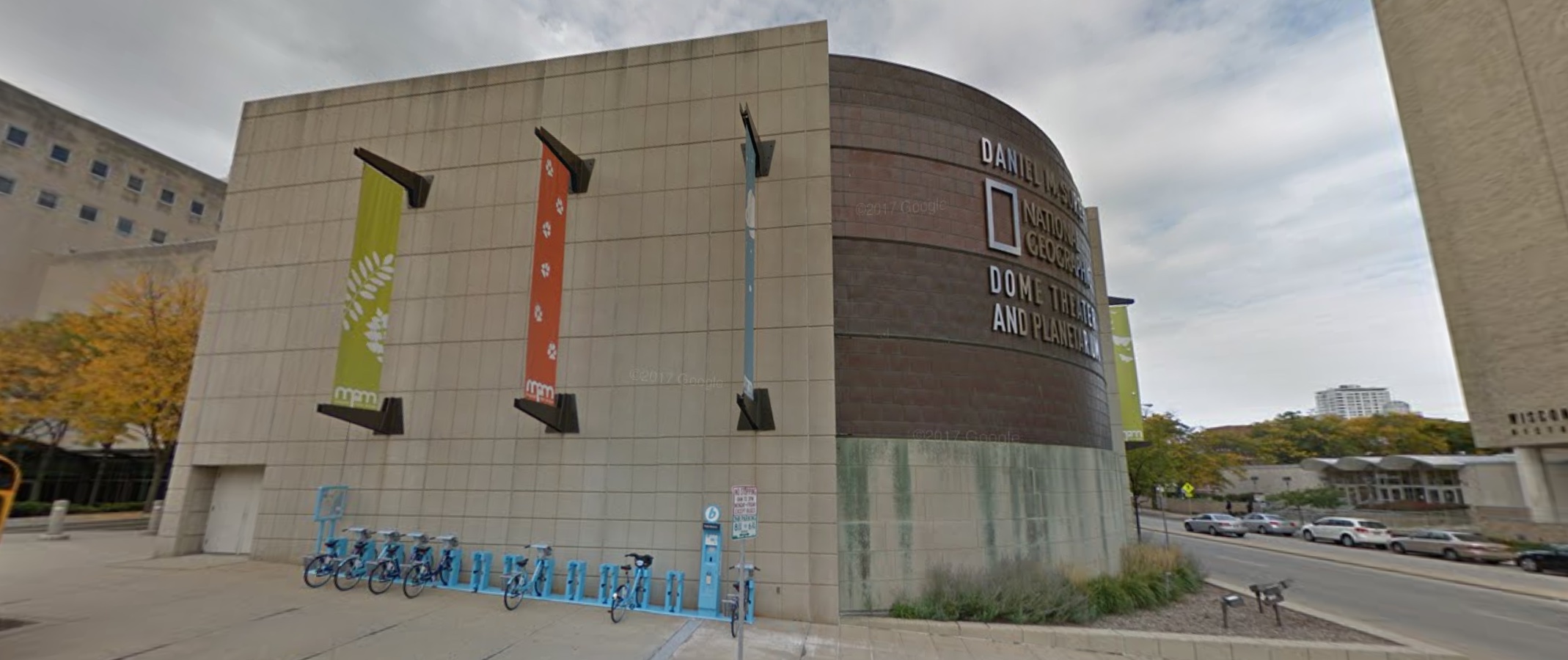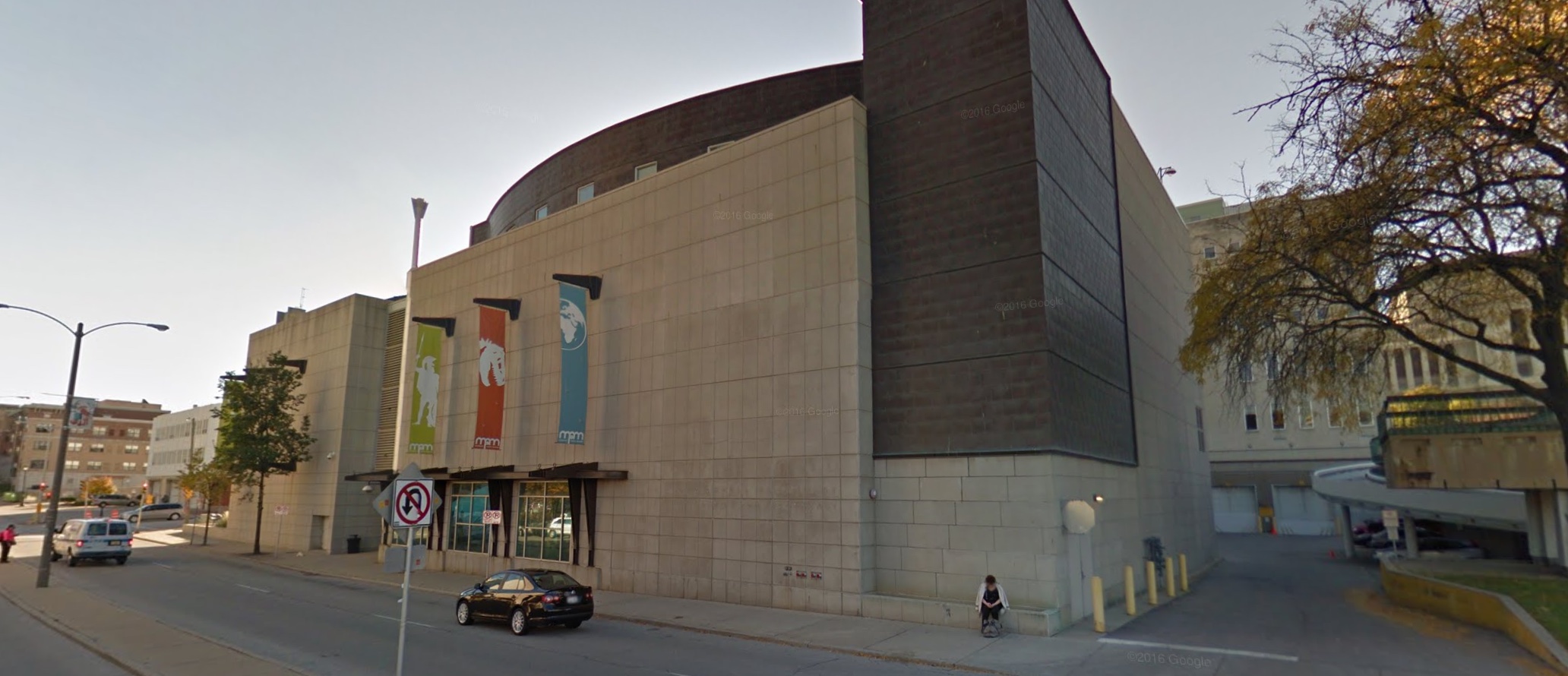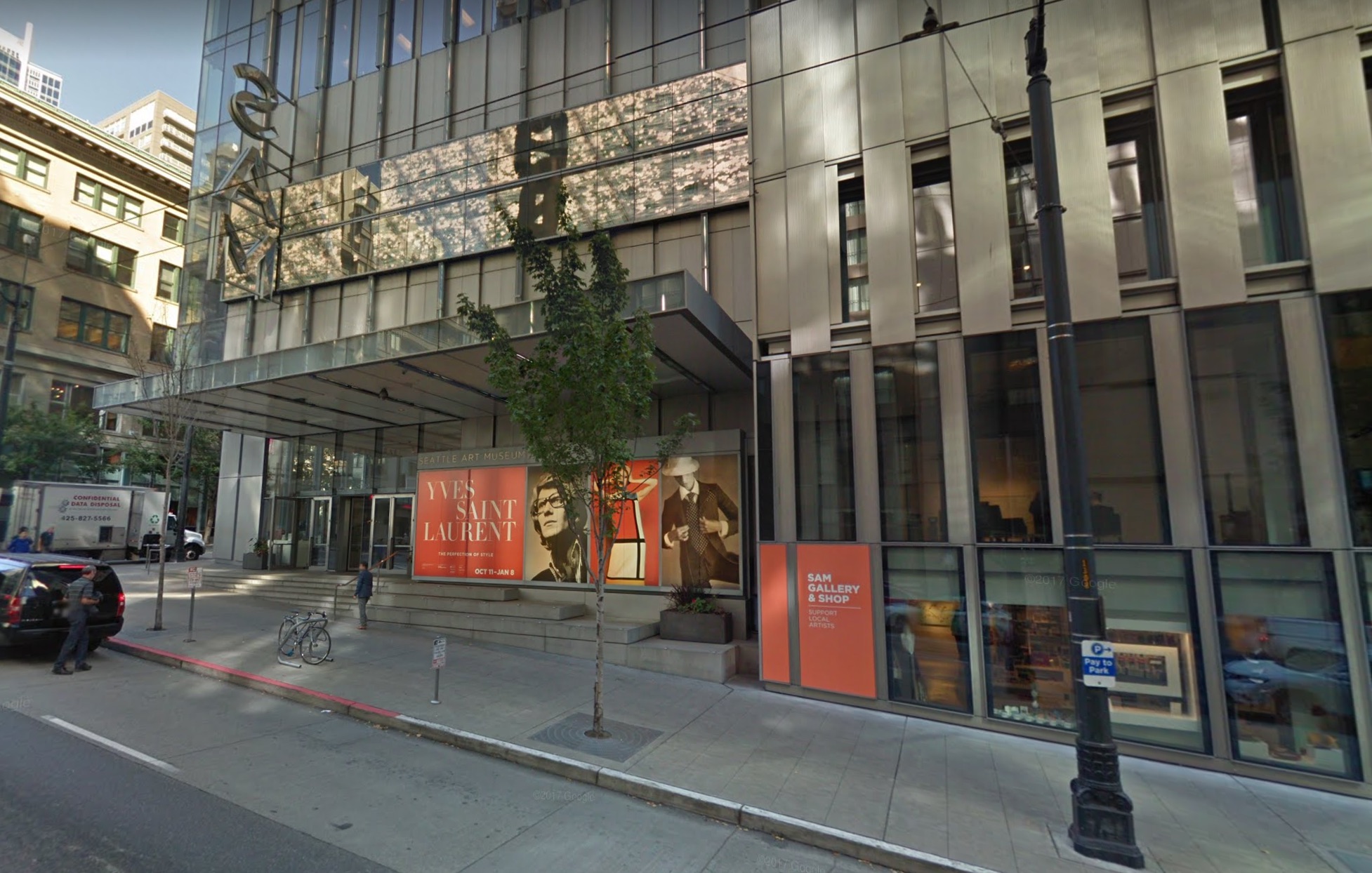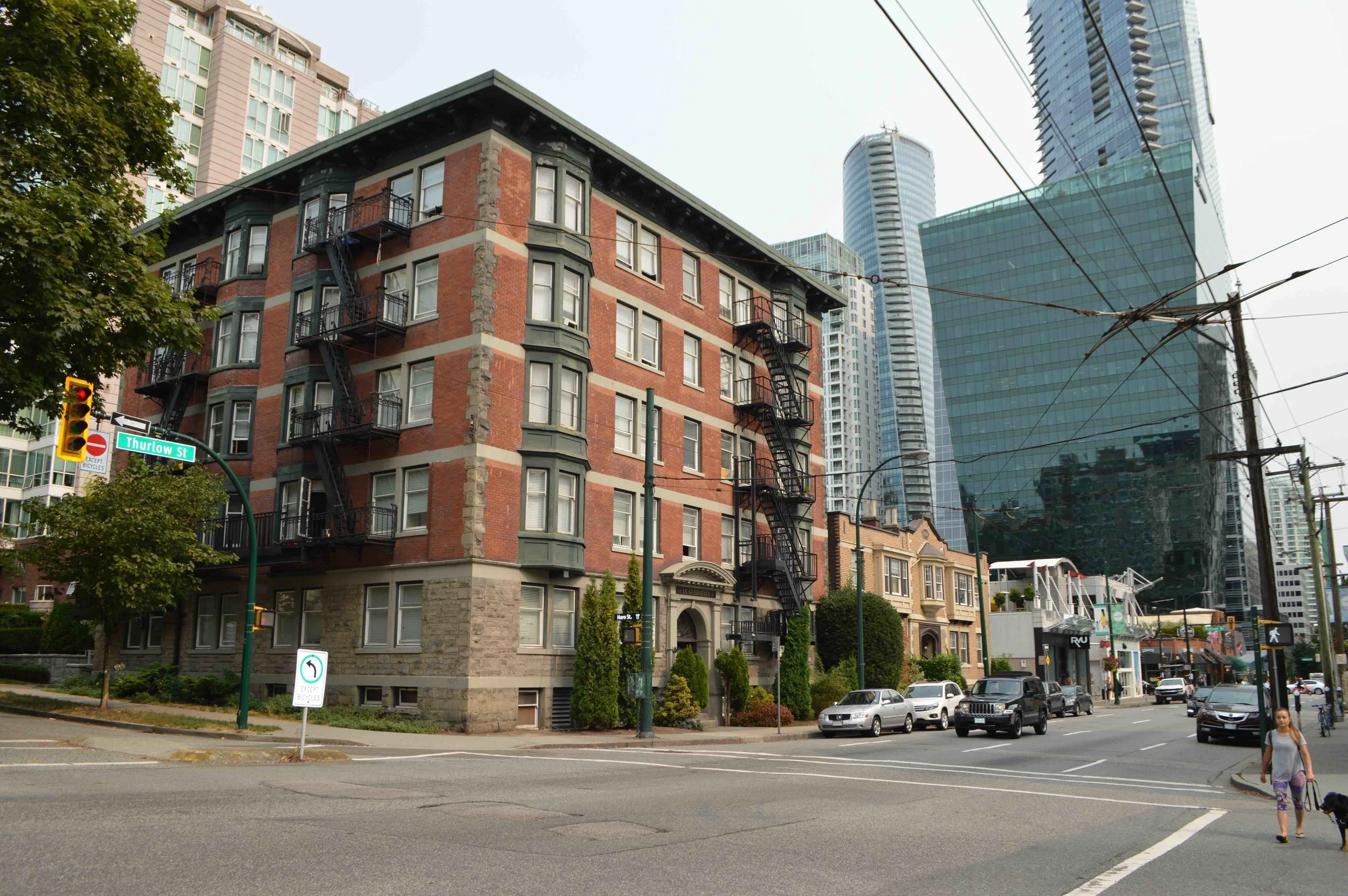How to Make Museums an Active Part of Your City
If you have a museum in your town, does it feel like an integral part of the city or a separate entity? Do museum visitors tend to spend time in the surrounding neighborhood or head home the minute they finish their visit? Urban museums often suffer from a distinct disconnect from their surroundings due to their large size, imposing design, and parking garages or lots.
Consider the Milwaukee Public Museum, located in downtown Milwaukee, WI where I live:
This prominent corner location is blank and uninviting to anyone walking by. There is a small entrance and a handful of windows located underneath the banner in the second photo, but that's it. The main entrance (just left of frame in the first photo) is only marginally better:
Source: Google Earth
Recessed back from the street and flanked by a flat concrete facade, this area becomes a complete dead zone anytime people aren't entering or exiting the building. It's a massive fortress.
Here's another example from Houston, TX:
Source: Google Earth
The Holocaust Museum in Houston offers not only an uninviting facade but also a parking lot that must be traversed to get to the entrance of the building. Not good for encouraging residents to visit the museum on foot and not good for getting visitors to check out the rest of the city. Take a look around your city and you're likely to find some similar examples.
We can’t ignore the fact that urban museums are destinations—that some people will travel into a city just to visit a particular museum—but are there ways we can build downtown museums to both engage visitors with the rest of the city and make the museum a better neighbor for residents who live nearby?
Connecting Museum Visitors with the Surrounding Neighborhood
If a family visits an out-of-town museum, that’s likely to be the focal point of their day, given the time it typically takes to fully experience a museum and the cost involved. But there are plenty of ways we could encourage that family to visit more of the city and stop in local businesses instead of simply driving to the museum and heading out as soon as their visit concludes. Here are some ideas:
A public map makes it easy to locate restaurants and points of interest (Source: Eric Fischer)
1. Install wayfinding signs near museum entrances. Simple maps and signs with arrows pointing to popular destinations and streets can go a long way toward encouraging museum visitors to visit a couple more things before they go home.
2. Get rid of museum cafes. They often serve over-priced, crappy food that patrons only eat out of desperation. If your museum is located in an area with other restaurants, then provide a map to those inside the museum and on the museum website instead of having a museum cafe. To attract visitors, some restaurants may even want to offer discounts to customers who show their museum ticket stubs at the register. Honoring re-entry for museum patrons would also help encourage people to step outside the museum walls for lunch before returning to their museum experience. Some museums do rely on cafe revenue to support their enterprise. If that's really an integral part of your museum's budget, check out idea #1 in the next section of this article.
3. Don’t provide parking. This will save an urban museum hundreds of thousands (if not millions) of dollars and it will also discourage the Park-See Museum-Leave mentality. If you’re parked in a museum garage, you’re probably going to need to leave as soon as you conclude your museum visit, either because the parking garage will close soon or because you don’t want to walk too far away from your car. Instead, encourage people to use public garages or on-street parking, or take a bus, train, cab, bikeshare etc. This will get people out walking and seeing the rest of the city by necessity. Surface parking lots are even worse than garages because, on top of all the issues that garages have, they also create a large, uninviting separation between the museum and the surrounding area. That should be avoided.
4. Make streets safe and easy to navigate. We know that walkable streets are economically productive streets. If the neighborhood surrounding a museum has streets that look inviting and safe, it’s much more likely to encourage museum visitors to venture beyond the exhibit halls and on to nearby restaurants and businesses.
By directing visitors into the surrounding neighborhood, urban museums can focus on what they do best—education—and encourage people to patronize local businesses in the process.
Making Museums a More Active Part of the City
One major issue with urban museums is their “coarse-grained” nature. Strong Towns writer Andrew Price coined the terms fine- and coarse-grained to describe the structure of city streets. A fine-grained street is composed of many different buildings while a coarse-grained street is dominated by a handful of massive developments. A coarse-grained building is often uninviting to passersby because it only has one or two entrances while the rest of its façade is blank. Large empty walls with few entrances can also make a street feel more dangerous because there are fewer people coming in and out or interacting with the sidewalk from inside.
Coarse-grained buildings also decrease the number of destinations and increase distances for someone traveling on foot. For example, a neighborhood with 20 fine-grained streets, each containing 20 businesses per block has 400 businesses within a small area. Meanwhile, a neighborhood with 20 coarse-grained streets, each containing 4 businesses per block has a mere 80 businesses within walking distance.
Urban museums are typically coarse-grained, often taking up one or more city blocks. This makes them less inviting neighbors. Now, the coarse-grained nature of museums completely makes sense—they’re usually large buildings full of lots of information and exhibits. But are there ways to mitigate this?
Here are a few ideas:
1. If you’re going to have them, locate museum cafes and shops at the ground level with their own entrances. It’s logical for museums to only have a few entrances; usually they are ticketed with some sort of security so there’s a need to control entry and exit to the building. But museum cafes and shops are typically open to the public with less need for security. Why not give them their own street-level entrances to help activate sidewalk life and decrease the amount of blank façade on a given street? Theaters and lecture halls would also be good candidates for separate street-level entrances.
2. Place windows against the street. Obviously this isn’t possible for exhibits that flank the street and need to be protected from light damage, but there are plenty of museum areas that would work just fine with windows: hallways, staircases, central atriums, shops, and cafeterias, for example. Windows along the street invite interaction between those outside and inside and make a more inviting space overall. Just make sure they're real windows—not the blacked out or always shaded ones that some businesses use to get around window requirements in urban areas.
3. Build public space around the museum. Public gardens, plazas, and seating areas offer a benefit to a surrounding neighborhood and create a space for the museum and city to interact. Even a set of stairs can become a public space if it's not aggressively policed.
4. Put museums on the second floor. This might sound weird, but only because it’s rarely done. Why not put a museum on the second floor of a building and allow the first floor to be commercial? With good, clear signage, entering the museum shouldn’t be a problem and, if the building was owned by the museum, the rent from first floor tenants would create extra income to support the museum’s endeavors. There are probably some complicated aspects to this involving taxation (given that most museums are nonprofits which are exempt from paying property tax) but a creative museum team and city should be able to work that out.
5. Keep the museum open late. The coarse-grained nature of museums makes them feel particularly dull and downright creepy at night when they’re closed and no one’s around. Most museums (with the exception of children’s museums) would probably be able to attract patrons in the evening if they stayed open late a couple nights a week, and many already host evening events. There’s no reason museum-going shouldn’t be an evening outing. This keeps eyes on the street later into the night, making the area safer as well as inviting more activity in the neighborhood.
Simple design decisions like where windows and doors are located, as well as broader shifts like the use of public space and ground floor retail could make museums a much more seamless part of their neighborhoods and likely invite more local residents to visit the museum in the process.
---
Most of the people reading this are probably not museum directors or builders, but that doesn't mean we can't act on the above suggestions. For one thing, most museums have boards of directors who make decisions about the future of the organization and these are open to the public (if you're nominated to serve on them). Local governments also play a role in deciding what sorts of structures to allow in their cities as well as what the streets around a museum look like. Even business owners with stores and cafes near a museum could play a role in changing the museum's relationship with the neighborhood (and attract more customers in the process).
The end result would be more visitors contributing to the local economy and neighborhoods that can be proud of their museums—not just as one-time destinations, but as active parts of their city.
Thanks to Strong Towns member Tim Wright for the inspiration for this piece.











Why do large-scale developers bother making cool mockups for their spaces, only to end up with a bland end product?